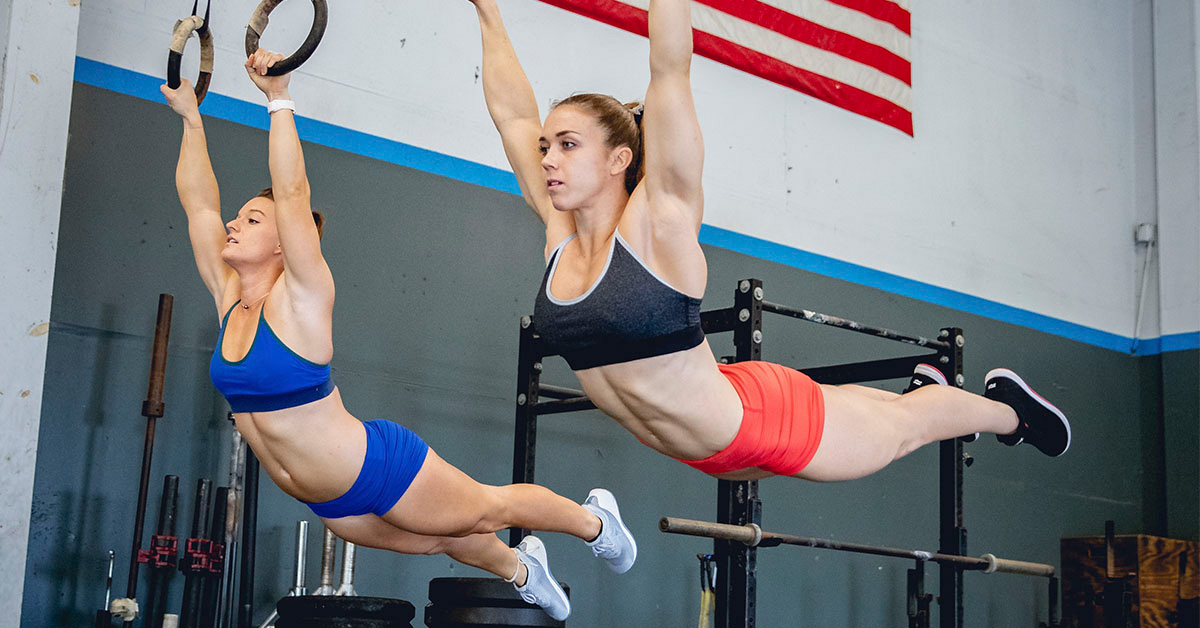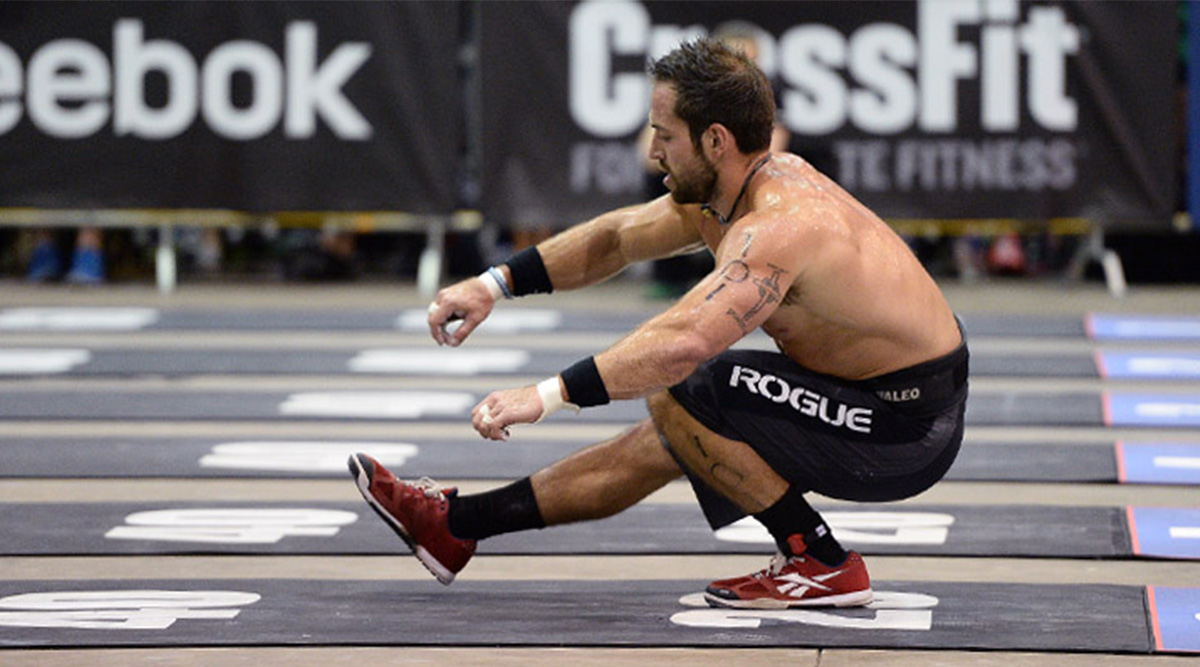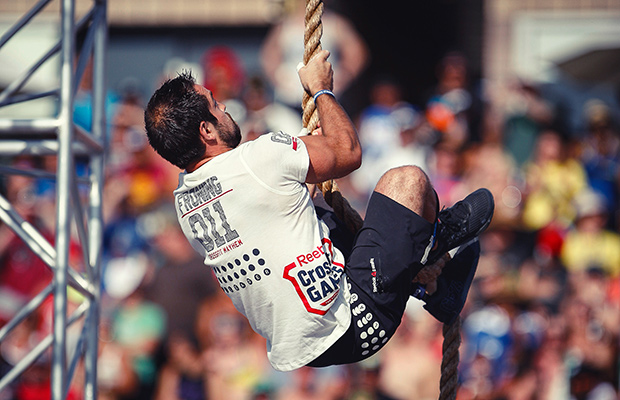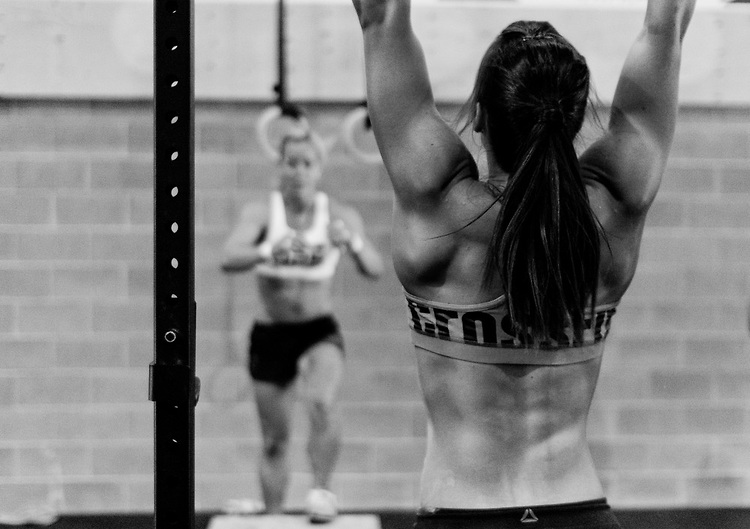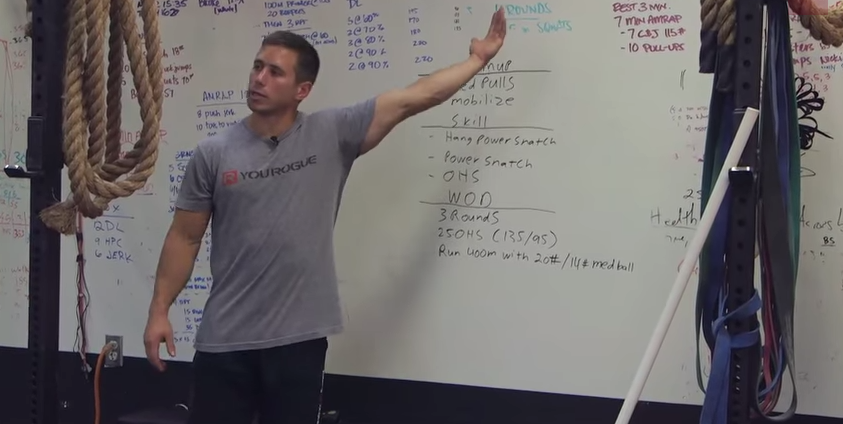Chippers, AMRAPs, 10+ RFT. Hello, fatigue. These types of workouts are a sure fire way to test your aerobic energy systems, not to mention your mental game. When it gets to those high reps and rounds, most athletes will do whatever they have to do just to reach the end as quickly as possible (and the subsequent collapse to the ground and sweat angels).
When it comes to burpees, 200-meter runs, and assault bikes, ergo most bodyweight and some accessory stuff, who cares what it looks like? Just get it done. But there are some times when quality form should not be compromised or you might end up with an involuntary six-week vacay or worse.
5 Times You Should Never Let Your Form Get Sloppy
1. Olympic Lifts (Especially the Heavy Reps)
View this post on Instagram
Let’s start with the obvious. A sloppy snatch is a one-way ticket to six weeks of shoulder rehab. When the WOD calls for high reps of snatches, finding a weight that you can safely move and control overhead should be paramount. This would be one of those times when it’s OK to turn your nose up at the RX weight and do what’s right for your strength and ability.
Deadlifts can be deadly on your lumbar if you compromise form for speed. In a room full of functional fitness athletes, 90% of them will be able to attest to this. If you want to go heavy with high reps, throw any notion of touch-and-go out the window. Make sure you are resetting at the start of every rep and putting your lats to work properly.
Also bear in mind that while we should aim to have strong technique to maintain a level of safety during the Olympic lifts, it’s in our best interest for other reasons, too. A properly executed lift is a fast and smooth lift. You will undoubtedly be able to get throw more reps at higher weights when you perform your lifts with flawless technique. Form matters!
2. Double-Unders
Hey, look, if your form falters on dubs, they probably won’t happen. #norep
We feel your (literal) pain on this one. The harder you try, the more tense you get, the more reps you miss, the more frustrated you get… followed by getting even more tense and missing more reps. It’s a neverending cycle. Then you walk out of the gym covered in whip marks.
Our best advice to you? Must. Stay. Calm. Double-unders require a lot less work than most of us think. Remember these three key points:
- Relax your body. You’re not snatching 100 kilos. You’re spinning a rope.
- Keeps your hands down by your sides.
- Spin from your wrists!
Here are a few WODs to work on your double-unders, plus a little extra advice from Khan Porter.
3. Bar Work (Especially Kipping and Butterfly Pull-Ups)
Again, this is about protecting the shoulders as well as your hands (torn skin = legit injury, remember). If you have a beautifully rhythmic kip happening on the bar and you start to lose the hollow tension in your body or you start flailing around like a blow-up man on top of a used car dealership, then it’s time to stop and reset.
Everything you do on the bar is compounded. You don’t do one rep of a kipping pull-up. You do 50. You do 100. Doing 50 or 100 of anything the wrong way is sure to end in disaster.
View this post on Instagram
4. Ring Work
Like double-unders, if your muscle-up form starts to get sloppy, chances are that the rep just won’t happen. Wriggling your way to the top of the rings might pass for a couple of reps, but without quality body positioning and arm movement, you’re wasting precious time and energy.
Plus, don’t even get us started on the kinds of injuries that can happen when muscle-up technique starts to fall apart.
5. Anything Upside-Down
View this post on Instagram
If your handstand walks are a bit dodgy and you look like a drunk scorpion, scale. If you get stuck at the bottom of your handstand push-ups, scale. A high-intensity workout is not the time to risk the safety of your head and neck. Save it for dedicated skills practice sessions and opt for some shoulder taps and wall walks, use ab mats, or work from a box. Done correctly, none of these scaling options will be disadvantageous, and it’s a great opportunity to work on building your strength for these movements.
There is a time and a place for working on complex lifting and gymnastics movements, but while your mind is focussed on counting reps and completing them quickly, keep the weight manageable and the movements comfortable. Sloppy form will almost always lead to injury, so save yourself the hassle and leave your ego at the door.

